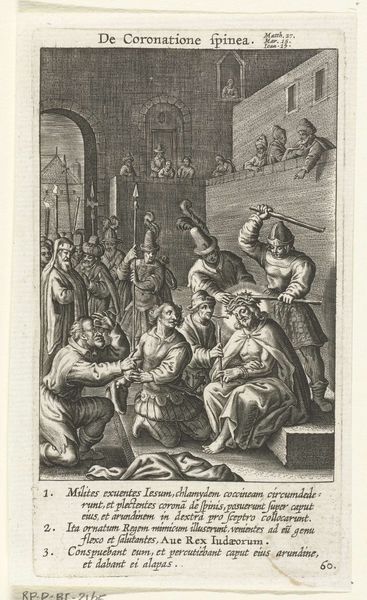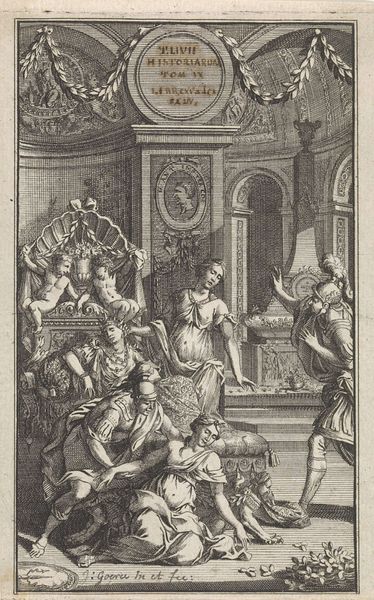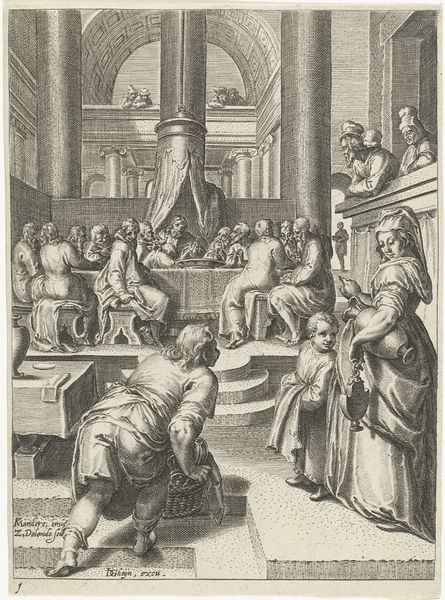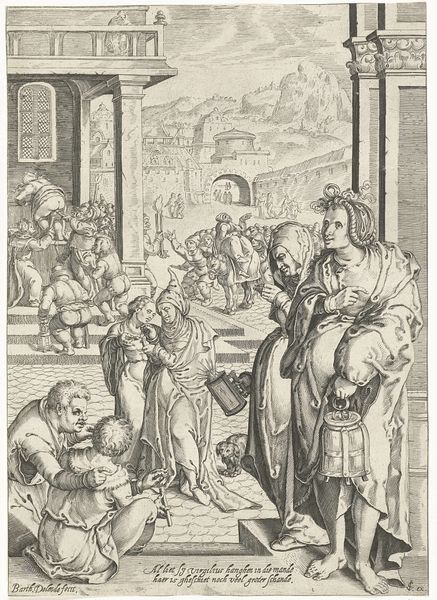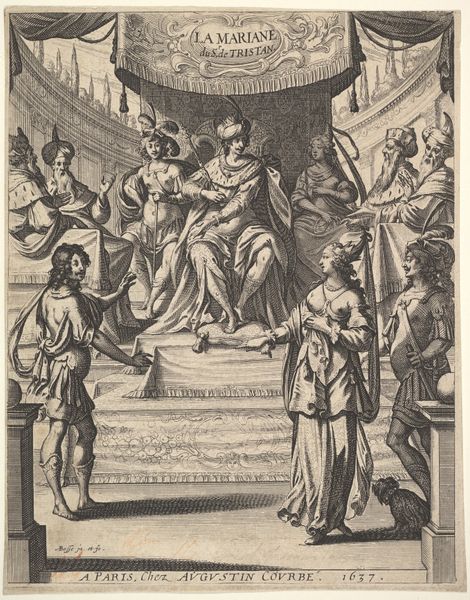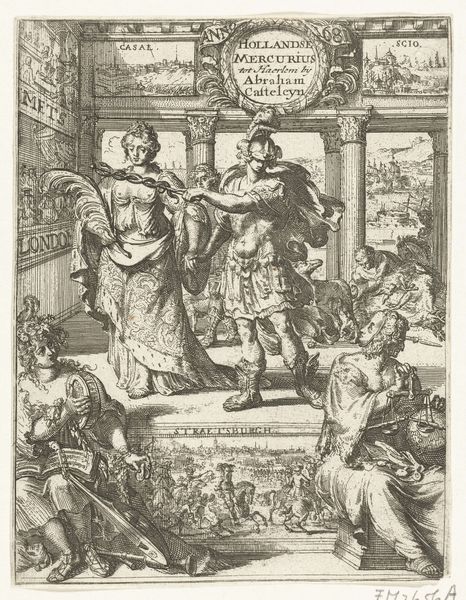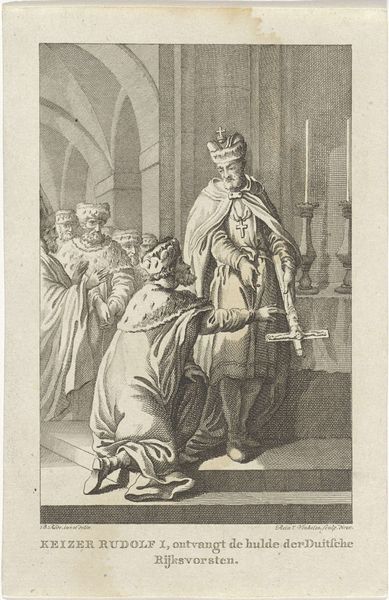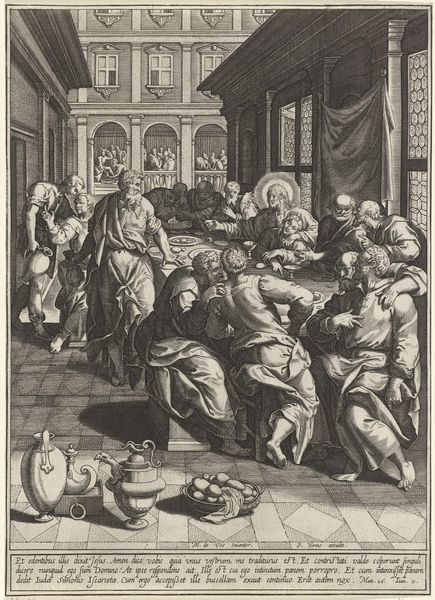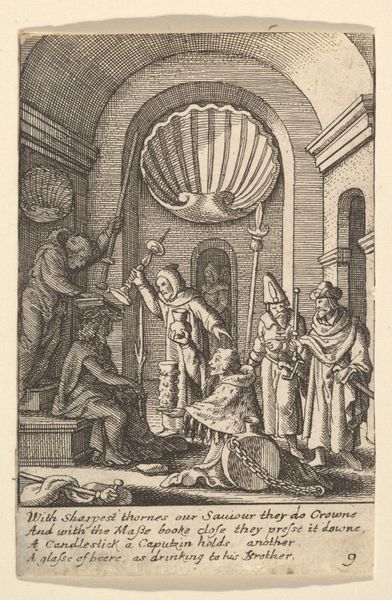
Dimensions: height 245 mm, width 203 mm
Copyright: Rijks Museum: Open Domain
Curator: Look at the frenetic energy conveyed in this 1582 engraving. The Stoning of Christ, by Johann Sadeler I, certainly pulls no punches in its depiction of mob violence. Editor: My first impression is the dynamism of it all, a real flurry of figures poised to strike. You immediately sense the tension, the pending doom hanging in the air. It has a very theatrical Baroque flair. Curator: Absolutely, the composition is intended to evoke drama. Sadeler places the event inside what appears to be a synagogue or temple, framing the figures with massive pillars and vaults. Notice how the figures seem to press forward into the foreground, pulling us into the unfolding horror. Editor: I’m especially drawn to the way gender operates within the scene. At the forefront of the work, notice the distressed women raising her hands and casting a worried expression skyward—a classic rendering of hysteria in such moments. I question if there is an added dimension of misogyny represented alongside the dominant themes of power and violence. Curator: An astute observation. Certainly, representations of women in similar historical moments have been read that way, furthering the symbolic narrative in ways we may have overlooked otherwise. More broadly, Sadeler was operating within a period of intense religious and political upheaval in Europe, amid the Counter-Reformation, and engravings like this were intended to reinforce orthodox doctrines. The staging itself— the temple as a backdrop—adds layers of significance. It all underlines a narrative of institutional power confronted by what it perceived as blasphemy. Editor: That’s a point. Consider how this engraving would circulate widely through print culture at the time, functioning almost as propaganda, hardening attitudes and solidifying specific viewpoints within communities undergoing significant transformation and, therefore, significant cultural anxiety. Curator: Examining such a graphic scene provokes reflection on how historical art functioned within and actively shaped sociopolitical discourses. The scale of these events, memorialized by Sadeler, had deep and far-reaching implications beyond the boundaries of a religious space. Editor: Indeed. And perhaps what feels particularly jarring now, so many centuries later, is how art was implicated in fueling divisive ideologies with often tragic human consequences. Food for thought on how images continue to work in contemporary culture.
Comments
No comments
Be the first to comment and join the conversation on the ultimate creative platform.
